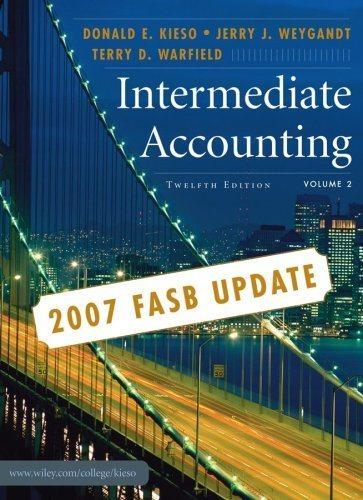Question
in Cases 1 to 3 below, assume that Division A has a product that can be sold either to Division B of the same company
in Cases 1 to 3 below, assume that Division A has a product that can be sold either to Division B of the same company or to outside customers. The managers of both divisions are evaluated based on their own divisions ROI. The managers are free to decide if they will participate in any internal transfers. All transfer prices are negotiated. Treat each case independently:
| Case | ||||||||||||
| 1 | 2 | 3 | 4 | |||||||||
| Division A: | ||||||||||||
| Capacity in units | 50,000 | 300,000 | 100,000 | 200,000 | ||||||||
| Number of units now being sold to outside customers | 50,000 | 300,000 | 75,000 | 200,000 | ||||||||
| Selling price per unit to outside customers | $ | 100 | $ | 40 | $ | 60 | $ | 45 | ||||
| Variable costs per unit | $ | 63 | $ | 19 | $ | 35 | $ | 30 | ||||
| Fixed costs per unit (based on capacity) | $ | 25 | $ | 8 | $ | 17 | $ | 6 | ||||
| Division B: | ||||||||||||
| Number of units needed annually | 10,000 | 70,000 | 20,000 | 60,000 | ||||||||
| Purchase price now being paid to an outside supplier | $ | 92 | $ | 39 | $ | 60 | * | |||||
*Before any purchase discount.
Required: 1. Refer to Case 1. A study has indicated that Division A can avoid $5 per unit in variable costs on any sales to Division B.
a. What is the minimum transfer price for Division A?
b. What is the maximum transfer price for Division B?
c. Will the managers agree to a transfer?
multiple choice 1
Yes
No
2. Refer to Case 2. Assume that Division A can avoid $4 per unit in variable costs on any sales to Division B.
a-1. What is the minimum transfer price for Division A?
a-2. What is the maximum transfer price for Division B?
a-3. It is assumed that managers are co-operative and understand their own business. Would you expect any disagreement between the two divisional managers over what the transfer price should be?
multiple choice 2
Yes
No
b. Assume that Division A offers to sell 70,000 units to Division B for $38 per unit and that Division B refuses this price. What will be the loss in potential profits for the company as a whole?
3. Refer to Case 3. Assume that Division B is now receiving a 5% price discount from the outside supplier.
a-1. What is the minimum transfer price for Division A?
a-2. What is the range of transfer price the manager's of both divisions should agree?
a-3. It is assumed that managers are co-operative and understand their own business. Will the managers agree to a transfer?
multiple choice 3
Yes
No
b. Assume that Division B offers to purchase 20,000 units from Division A at $52 per unit. If Division A accepts this price, would you expect its ROI to increase, decrease, or remain unchanged?
4. Refer to Case 4. Assume that Division B wants Division A to provide it with 60,000 units of a different product from the one that Division A is now producing. The new product would require $25 per unit in variable costs and would require that Division A cut back production of its present product by 30,000 units annually. What is the lowest acceptable transfer price from Division As perspective? (Round your intermediate and final answers to 2 decimal places.)
Step by Step Solution
There are 3 Steps involved in it
Step: 1

Get Instant Access to Expert-Tailored Solutions
See step-by-step solutions with expert insights and AI powered tools for academic success
Step: 2

Step: 3

Ace Your Homework with AI
Get the answers you need in no time with our AI-driven, step-by-step assistance
Get Started


